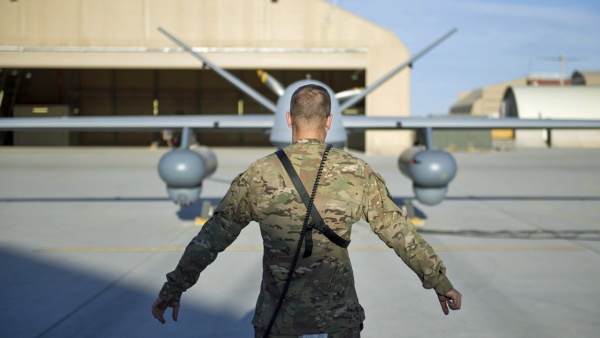 In his most comprehensive public comments yet on the US covert drone war, President Barack Obama has laid out the five rules he says the United States uses to target and kill alleged terrorists – including US citizens. The president has also warned of the need to avoid a ‘slippery slope’ when fighting terrorism, ‘in which you end up bending rules, thinking that the ends always justify the means.’ Obama’s comments were made in an on-camera interview with CNN’s chief White House correspondent Jessica Yellin. Only once before has the president publicly discussed the US covert drone policy, when he spoke briefly about strikes in Pakistan’s tribal areas. Now Obama says there are five rules that need to be followed in covert US drone attacks. In his own words:
In his most comprehensive public comments yet on the US covert drone war, President Barack Obama has laid out the five rules he says the United States uses to target and kill alleged terrorists – including US citizens. The president has also warned of the need to avoid a ‘slippery slope’ when fighting terrorism, ‘in which you end up bending rules, thinking that the ends always justify the means.’ Obama’s comments were made in an on-camera interview with CNN’s chief White House correspondent Jessica Yellin. Only once before has the president publicly discussed the US covert drone policy, when he spoke briefly about strikes in Pakistan’s tribal areas. Now Obama says there are five rules that need to be followed in covert US drone attacks. In his own words:
1 ’It has to be a target that is authorised by our laws.’
2 ’It has to be a threat that is serious and not speculative.’
3 ’It has to be a situation in which we can’t capture the individual before they move forward on some sort of operational plot against the United States.’
4 ‘We’ve got to make sure that in whatever operations we conduct, we are very careful about avoiding civilian casualties.’
5 ‘That while there is a legal justification for us to try and stop [American citizens] from carrying out plots… they are subject to the protections of the constitution and due process.’
Obama twice referred to what he claims has been ‘misreporting’ by the media of his drones policy. Apparently responding to recent allegations that his administration prefers to kill rather than capture suspects, the president said that ‘our preference has always been to capture when we can because we can gather intelligence’ but that it’s sometimes ‘very difficult to capture them.’ CNN’s Yellin did not bring up the issue of civilian casualties – despite CNN itself reporting multiple civilian deaths in a suspected Yemen drone strike just hours earlier. However Obama insisted that ‘we are very careful about avoiding civilian casualties, and in fact there are a whole bunch of situations where we will not engage in operations if we think there’s going to be civilian casualties involved.’
Obama also took on the contentious targeted killing of US citizens – the subject of a number of high profile legal cases. Insisting that there was ‘legal justification’ for such killings, the president conceded that ‘as an American citizen, they are subject to the protections of the constitution and due process.’ The US Department of Justice (DoJ) is presently trying to block publication of administration legal opinions which allegedly provided the justification for the killing of US citizen Anwar al Awlaki and others. In a recent court submission the DoJ insisted that Obama’s January comments on the covert drone war could not be taken as an admission that it was taking place: ‘Plaintiffs speculate that the president must have been speaking about CIA involvement in lethal operations…. This is insufficient to support a claim of official disclosure.’ With Obama now publicly laying out the ground rules for the covert drone war, the DoJ’s position appears further damaged.
The president also discussed in some detail his moral concerns regarding the campaign, admitting that he ‘struggle[s] with issues of war and peace and fighting terrorism.’ Our preference has always been to capture when we can because we can gather intelligence.’ He said that he and his national security team needed to ‘continually ask questions about “Are we doing the right thing? Are we abiding by the rule of law? Are we abiding by due process?”‘ If that failed to happen, the president warned, there was the risk of a ‘slippery slope… in which you end up bending rules, thinking that the ends always justify the means.’ The continuing deaths of civilians – and CIA tactics such as the deliberate targeting of rescuers – have led some to argue that the US is already bending or even breaking those rules.
Chris Woods, Obama’s five rules for covert drone strikes, Bureau of Investigative Journalism, Sept. 6, 2012
